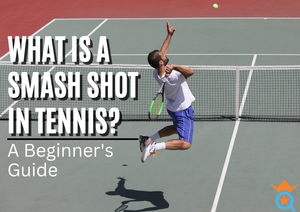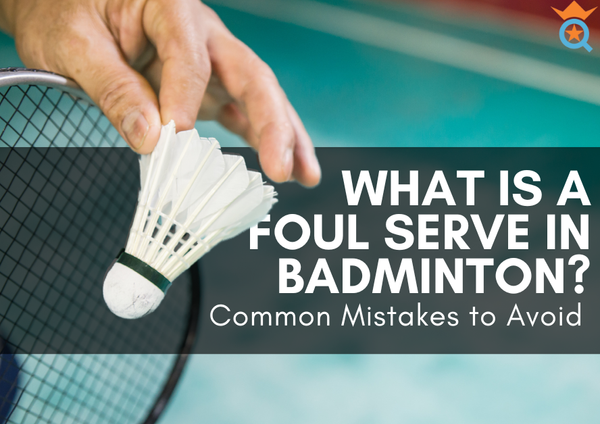Are you tired of the frustration that comes from hitting fat golf shots? You're not alone! Many golfers, from beginners to seasoned players, experience the exasperation of fat shots on the golf course.
But worry not, for there is hope. Addressing this issue is crucial for improving your overall golf game, but it's also vital to regaining the joy and satisfaction of a well-played round.
In this article, we'll explore the causes behind fat golf shots and provide practical tips to help you eliminate them, ultimately leading you to a more fulfilling golf experience.
Understanding the Causes of Fat Golf Shots
Before diving into solutions, it's essential to understand the root causes of fat golf shots. By identifying the factors contributing to this issue, you can take targeted steps to address them and improve your swing. Here are the most common causes of hitting fat golf shots:
Swaying on the Golf Swing
Swaying during the golf swing can lead to inconsistent ball striking. When your body moves too much toward or away from the target during the backswing, it shifts the arc of your swing. This change causes the low point of your swing to be either in front of or behind the ball, leading to thin or fat shots. Maintaining a stable base and limiting excessive lateral movement can help avoid swaying and improve your ball striking.
Setting up Too Low
Setting up too low can also contribute to fat golf shots. This problem occurs when your left arm (for right-handed players) remains too bent during the backswing. The club bottoms out before the ball when you initiate the downswing, and the club's weight straightens your arm. Some players may try to compensate by "standing up" at impact, but this can lead to even more inconsistency in ball striking.
Bending Legs Excessively
Many beginners mistakenly believe they must bend their legs significantly while hitting the ball. However, excessive bending of the knees can lead to poor balance and an unstable base. Instead, your setup should have a slight bend in the knees – just enough to be visible – which helps generate power and allows your body to rotate.
Incorrect Positioning of the Feet
Finally, the incorrect positioning of your feet can result in fat golf shots. For example, if your right foot points to the right, your weight will naturally shift to the right during the backswing, making it challenging to shift back to the left on the downswing. This weight imbalance can lead to hitting the ground before the ball. Proper foot positioning is crucial for maintaining balance and ensuring a smooth weight transfer during the swing.

Quick Fixes for Hitting Fat Golf Shots
Eliminating fat golf shots can sometimes require a partial overhaul of your swing. Sometimes, minor adjustments to your setup can significantly improve your ball striking. Here are some easy-to-apply tips to help you stop hitting irons fat or thin:
Adjusting Ball Position
One of the most straightforward fixes for fat golf shots is to adjust the ball's position in your stance. The ideal ball position varies depending on the club you're using, but generally, it should be placed between the inside of your left heel and the midpoint between your feet (for right-handed players). If you consistently hit the ball fat during a round, try moving the ball back in your stance. This adjustment can help you strike the ball before the ground, leading to better contact.
Correcting Feet and Leg Positioning
Right feet and leg positioning are essential for maintaining balance and stability during the golf swing. Ensure that your feet are not spread too far apart, and your knees are slightly bent, with your torso leaning forward comfortably. This setup allows for a smooth weight transfer and rotation throughout the swing. Additionally, ensure your right foot (for right-handed players) is not pointing too far to the right, as this can cause weight distribution issues during the swing.
Ensuring Proper Address Position
Your address position plays a crucial role in preventing fat golf shots. When setting up the ball, ensure that your hands are slightly ahead of the ball, with your weight distributed evenly between both feet. Your arms should be extended but not overly tense, and your posture should be relaxed yet athletic. Maintaining a proper address position can create a more consistent swing path and improve your ball striking.

Can a Strong Grip Cause Fat Shots?
A strong grip can contribute to fat golf shots, although it's not the only factor. When we talk about a "strong grip" in golf, we're referring to positioning the hands on the club rather than the actual grip pressure. A strong grip occurs when the hands are rotated more to the right on the club (for right-handed players), which can cause the clubface to close at impact.
Relationship Between Grip Strength and Fat Golf Shots
A strong grip can lead to fat shots because it encourages a more aggressive release of the club through impact. This bold release can cause the club to bottom out early, leading to a fat shot. Additionally, a strong grip can create a more inside-out swing path, resulting in a shallow angle of attack and an increased likelihood of hitting the ground before the ball.
Adjusting Your Grip to Avoid Fat Shots
To minimize the risk of fat shots due to a strong grip, consider making the following adjustments:
- Weaken your grip: Rotate your hands slightly to the left on the club (for right-handed players) to achieve a more neutral grip. This adjustment can help prevent the clubface from closing too much at impact and promote a more consistent swing path.
- Monitor grip pressure: Maintain a relaxed grip pressure throughout the swing. Gripping the club too tightly can lead to tension in your arms and wrists, negatively impacting your swing and increasing the chances of fat shots.
- Focus on a balanced setup: Ensure your weight is evenly distributed between both feet at the address, with your hands slightly ahead of the ball. A balanced setup promotes a more consistent swing path and reduces the likelihood of hitting the ground before the ball.
These adjustments to your grip can minimize the risk of fat shots and improve your overall ball striking. Remember that changes to your grip may initially feel uncomfortable, but with practice, they will become more natural and help you achieve better results on the golf course.

Drills and Practice Techniques to Improve Ball Striking
Consistent practice is vital to eliminating fat golf shots and improving overall ball striking. By incorporating specific drills into your practice routine, you can target the aspects of your swing that need improvement. Here are two effective drills to practice at the driving range to help you stop hitting the ball fat:
Tee Drill
The tee drill is an excellent way to focus on striking the ball before the ground. To perform this drill:
- Set up a golf ball on the ground as you normally would.
- Push a tee into the ground about one inch behind the golf ball.
- Make a full swing, aiming to strike the ball without hitting the tee.
After the swing, observe the divot about the tee. Ideally, the divot should start past the tee, indicating that you've struck the ball before hitting the ground.
If the divot starts closer to or behind the tee, you'll know you're still hitting the ball fat. Repeat this drill regularly to improve your ball striking and eliminate fat shots.
Focusing on a Specific Point on the Golf Ball
Another effective practice technique to improve ball striking is to focus on a specific point or dimple on the back of the golf ball. This approach forces you to concentrate on hitting the ball first and playing through it, which can help prevent fat shots.
- Choose a specific dimple or point on the back of the golf ball.
- Set up the ball as you normally would, focusing on the chosen point.
- Make a full swing, aiming to strike the selected point on the ball.
By focusing on a specific point on the ball, you'll train yourself to strike the ball before the ground and improve your ball-striking consistency.
The Importance of Consistent Practice
Consistent practice is vital for eliminating fat golf shots and enhancing your overall golf game. Incorporate these drills into your regular practice sessions to see noticeable improvements over time. As with any skill, progress may be gradual, but persistence and dedication will ultimately lead to success on the golf course.

Takeaways
Eliminating fat shots from your golf game is crucial for enhancing your overall performance on the course. To stop hitting fat shots, focus on understanding the common causes, such as swaying during the golf swing, setting up too low, excessive bending of the legs, and incorrect foot positioning.
Address these issues by adjusting your ball position, correcting your feet and leg, and ensuring proper address. Additionally, consider the impact of a strong grip on fat shots and make necessary adjustments. Incorporate drills such as the tee drill and focusing on a specific point on the golf ball into your practice routine to improve your ball striking.
Persistence and consistent practice are vital to achieving success in golf. As you apply the tips and techniques discussed in this article, remember that progress may be gradual, but your dedication will ultimately lead to noticeable improvements in your golf game. Keep refining your swing, working on your setup, and regularly practicing to eliminate fat shots and become a more skilled and confident golfer.
Popularity of Golf
FAQs
What causes you to hit the ball fat?
Fat shots are often caused by staying on the back foot during the swing, resulting in limited weight transfer and the club hitting behind the ball. Positioning the ball slightly forward in the stance can encourage proper weight transfer in the golf swing.
How do you stop hitting a golf ball fat?
To stop hitting fat shots, focus on improving weight transfer, adjusting ball position, correcting foot and leg positioning, and ensuring a proper address position. Regular practice and incorporating specific drills, such as the tee drill, can also help improve ball striking.
Why do I hit it fat and thin?
Hitting fat and thin shots can result from an instinct to lift the ball off the ground. Swinging off the back foot or flipping the hands through impact causes the club to bottom out too soon, leading to fat shots (hitting the ground first) or thin shots (catching the ball on the upswing).
How do you avoid hitting fat shots in wet conditions?
To avoid hitting fat shots in wet conditions, maintain a stable stance and solid contact with the golf ball. Keep your weight centered and avoid swaying or leaning too far back during the swing. Additionally, make a slightly steeper angle of attack, which can help prevent the club from digging into the wet turf.








